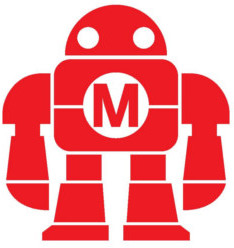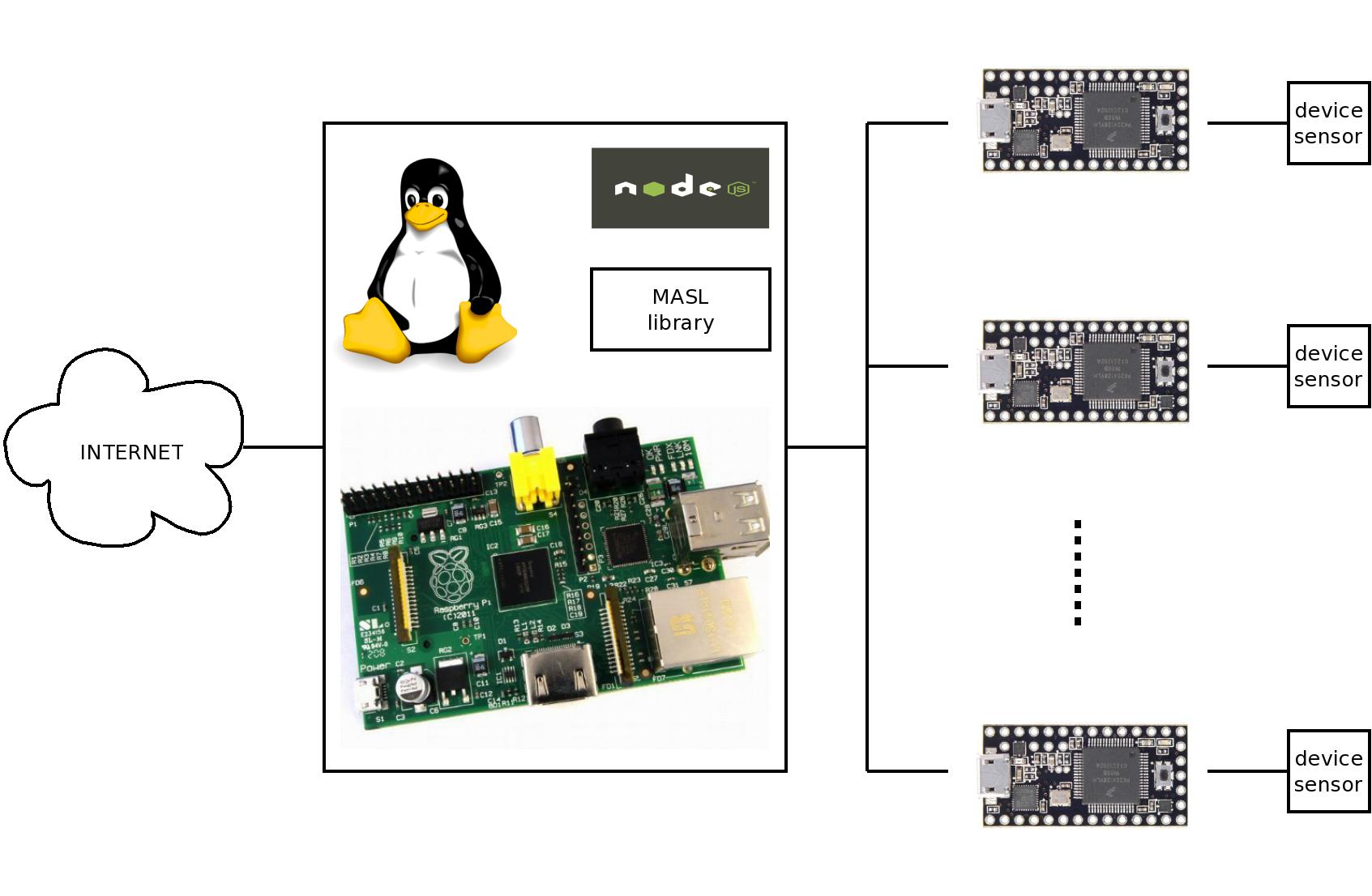Abstract
The maker movement is a DIY (Do It Yourself) movement which encourages people to explore new ideas. The high school shop class has become a thing of the past. But losing the hands on aspect of working with your hands, has led to a generation that is afraid to do things themselves. If we are going to create a new generation of strong Americans, we need to reclaim the DIY spirit, and encourage people to experiment.
In the electronics arena of the maker movement Linux is a driving force providing the Operating System underpinnings for many of the experimenter boards. It is open source, it is scaleable, it is modable and best of all it is free.
This section will explore how to use Linux in an exploration of micro controller boards. We will explore how Linux can provide a stable base on which to build and experiment.

Maker Culture
The maker culture is a contemporary culture or subculture representing a technology-based extension of DIY culture. Typical interests enjoyed by the maker culture include engineering-oriented pursuits such as electronics, robotics, 3-D printing, and the use of CNC tools, as well as more traditional activities such as metalworking, woodworking, and traditional arts and crafts. The subculture stresses new and unique applications of technologies, and encourages invention and prototyping.[1] There is a strong focus on using and learning practical skills and applying them creatively. Maker Culture
We are Makers
We Are Makers from Learning Studio on Vimeo.
Hacker Space
Maker Movement in Education
THE MAKER MOVEMENT is a global community of inventors, designers, engineers, artists, programmers, hackers, tinkerers, craftsmen and DIY’ers—the kind of people who share a quality that Rosenstock says “leads to learning [and]…to innovation,” a perennial curiosity “about how they could do it better the next time.” The design cycle is all about reiteration, trying something again and again until it works, and then, once it works, making it better. As manufacturing tools continue to become better, cheaper and more accessible, the Maker Movement is gaining momentum at an unprecedented rate. Over the past few years, so-called “makerspaces” have cropped up in cities and small towns worldwide—often in affiliation with libraries, museums and other community centers, as well as in public and independent schools—giving more people of all ages access to mentorship, programs and tools like 3-D printers and scanners, laser cutters, microcontrollers and design software. Maker Movement Reinvents Education
Transform the U.S. Economy
How the ‘Maker’ Movement Plans to Transform the U.S. Economy as discussed in the business section of Time magazine.
Maker Movie
In this movie the focus is more on enpowering inventors and creators with tools, and support. This is one role of the Maker’s Movement, but not the primary one in my opinion. Although we should remember this inventive spirit is one of the strengths of the USA.
Make Projects
For more information, visit the website Make: Projects.
What is the Maker’s Movement?
The maker movement, as we know, is the umbrella term for independent inventors, designers and tinkerers. A convergence of computer hackers and traditional artisans, the niche is established enough to have its own magazine, Make, as well as hands-on Maker Faires that are catnip for DIYers who used to toil in solitude. Makers tap into an American admiration for self-reliance and combine that with open-source learning, contemporary design and powerful personal technology like 3-D printers. The creations, born in cluttered local workshops and bedroom offices, stir the imaginations of consumers numbed by generic, mass-produced, made-in–China merchandise. Why the Maker Movement Is Important to America’s Future
So Why would you want to be involved in this movement? Well for me there are several reasons.
First is enjoyment of imagining and designing new of different tools. I enjoy looking around my house and thinking of how to make it more user friendly and more fun. This can take the form of adding my own weather station, or controlling lights from my laptop, or keeping my wife’s tomotato plants watered diring the summer. The ideas can be as silly as a robot to server drinks, to a automated method of refilling the bird feeder during the winter.
This can take the form of how to fix my furnace, or how to repair my refrigerator. Instead of calling the repair man when things break, why not explore how the system are made and fix them yourself. There is a lot of satisfaction to being a handy man/woman around the house.
Second is the fun of sharing the ideas and designs with other people. This can take the form of brain storming a new idea, or discussing how some one else solves a particular problem. Even discussing impossible or unlikely ideas can be a useful discussion.
Third is the sharing of knowledge in how to implement or build something. We can learn welding from someone who already has that skill. Or sewing or cooking, or wood working any skill that can be shared adds to the enjoyment of the whole group.
What does being a maker mean?
American Maker (1960) is a movie about what it means to be a maker in America from the 1960’s.
For a more indepth look at the moveent, you should read the article Maker Movement which describes the drivers, history, impact of the maker movement.
Finally I would like to present the Maker Movement Manifesto written by someone who sets up Tech shops across the country.
Linux in Embedded Systems
The microcontroller boards are capable of performing many simple tasks, at a fraction of the cost of custom systems. It is simpler and cheaper to customize the software rather than the hardware. The movement of processing tasks to many computers mimics what has been happening in super computers. Computers like IBM Watson, are built from many desktop machines rather that a single fast processing unit.
The idea of distributing the work has been around since the early main frame computers. It was common for the main frame to have a processor in the card reader, and another processor in the print server. Many of the interface boards had some limited intelligence to communicate with the terminals so as to not eat up the computing power of the central processor.
The advent of the PC moved all the tasks to a single CPU. But today we are seeing the process reversed due to the internet, and the need to share data across multiple computers.
Embedded Systems Using Linux
Linux is a very capable operating system that has one very big advantage over almost all other operating systems, which is its low cost. Since Linux is available for download free from the Internet, it has become very popular. It is very modular in nature, which also makes it suitable for use in embedded systems, since all features of the system that are not needed for a specific embedded system can be removed from the kernel. In addition, Linux has been ported successfully to a large number of processor architectures, which allows it to run on many different types of CPUs. Embedded Systems Using Linux
Small computers can run Linux
The Ubuntu Linux distribution has been ported to the cheapest and most portable platform yet: An Atmel ATmega microcontroller.
Boasting a 20MHz 8-bit AVR processor, 128KB of flash storage and a massive 16KB of SRAM, the ATmega1284P isn’t the most logical choice for building a microcomputer. It’s the same basic design found in the Arduino prototyping platform: a microcontroller, designed to use its 32 pins to interface with external hardware like sensors, motors and LEDs. Linux ported to Atmel’s ATmega microcontrollers
From wrist watches to cluster-based supercomputers
Linux now spans the spectrum of computing applications, including IBM’s tiny Linux wrist watch, hand-held devices (PDAs and cell phones), Internet appliances, thin clients, firewalls, industrial robotics, telephony infrastructure equipment, and even cluster-based supercomputers. Let’s take a look at what Linux has to offer as an embedded system, and why it’s the most attractive option currently available. Embedded Linux applications: An overview, by IBM

Written by John F. Moore
Last Revised: Tue 01 Sep 2020 08:13:14 PM EDT

This work is licensed under a Creative Commons Attribution-NonCommercial-ShareAlike 3.0 Unported License.
